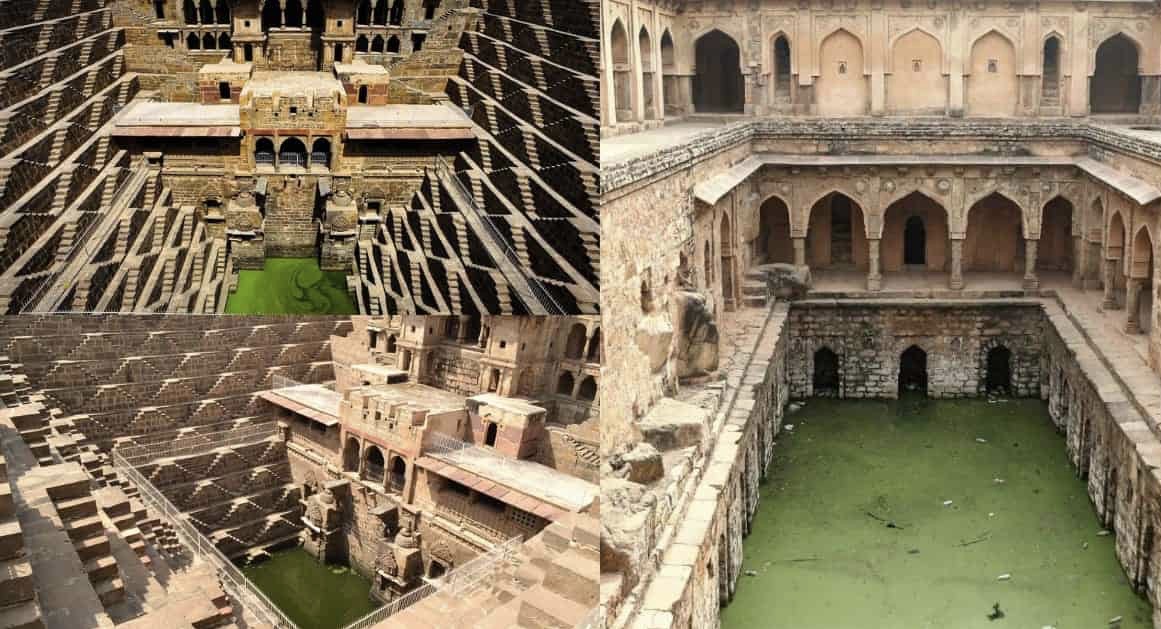
Ancient Stepwells: Architectural Marvels of Water Conservation
Have you ever stopped to think about the journey water takes from the sky to your tap? In today's world, where we're constantly reminded of the importance of water conservation and sustainability, it's fascinating to look back at how our ancestors tackled similar challenges in the most ingenious ways. That's where ancient stepwells come into play!
Picture this: You're scrolling through your feed, seeing headlines about water scarcity and climate change. It's all too real, right? But then, you stumble upon something that piques your curiosity—a glimpse into the past, where communities thrived even in the face of arid landscapes and erratic rainfall patterns.
That's the magic of stepwells — a blend of ancient wisdom and architectural brilliance that allowed civilizations to not just survive, but flourish, in some of the harshest environments. These captivating structures, scattered across the Indian subcontinent, offer more than just a history lesson. Also known as baoris, vavs, or bawdis, they're living testaments to human resilience and innovation, beckoning us to uncover their secrets and draw inspiration for our own water-conscious world.
Think about it: While we're grappling with water shortages and unsustainable practices, our ancestors were busy crafting marvels that harnessed the power of nature itself. Stepwells weren't just about fetching water; they were community hubs, architectural wonders, and symbols of cultural pride. Each step, each carving, whispered stories of a bygone era where people worked in harmony with the land, not against it.
So, why should you care about ancient stepwells? Well, besides being Instagram-worthy destinations (hello, #StepwellSelfie!), they offer invaluable lessons for tackling modern-day challenges. From innovative water conservation techniques to fostering social cohesion, these ancient wonders have plenty to teach us about sustainable living and collective action.
Join us as we embark on a journey through time and space, exploring the legacy of ancient stepwells and uncovering their relevance in today's quest for a more water-resilient future.
Historical Significance
Stepwells have been integral to Indian civilization for over a millennium, with the earliest structures dating back to the 4th century AD. As the Indian subcontinent faced erratic monsoons and arid climates, ensuring water sufficiency became a paramount concern for communities. Stepwells emerged as a sustainable solution, ingeniously designed to harvest and conserve rainwater, making them vital to agricultural practices and daily life.
Architectural Marvels
What distinguishes stepwells from conventional wells is their intricate architecture. These structures typically consist of a series of descending steps leading to a water source, such as a natural spring or reservoir. The steps, often adorned with ornate carvings and motifs, not only provide access to water but also serve as gathering spaces for social and religious activities. The deeper one descends into the well, the cooler the temperature becomes, offering respite from the scorching heat—a testament to ancient engineering prowess.
Water Conservation Techniques
Stepwells employed various techniques to maximize water retention and minimize evaporation. One such technique is the construction of subterranean chambers and tunnels that channel rainwater from surrounding catchment areas into the well. These chambers act as reservoirs, storing excess water during the monsoon season for use during dry periods. Additionally, the stepped design of the wells allows for greater surface area exposure, facilitating natural groundwater recharge and minimizing wastage.
Cultural and Social Significance
Beyond their utilitarian function, stepwells held immense cultural and social significance in ancient Indian society. These structures served as gathering places for community rituals, ceremonies, and festivals, fostering social cohesion and camaraderie. The intricate carvings and sculptures adorning the wells often depicted mythological narratives, religious motifs, and scenes from daily life, offering insights into the cultural milieu of the time.
Examples of Iconic Stepwells
1. Rani ki Vav, Gujarat: Located in Patan, Gujarat, Rani ki Vav is perhaps one of the most renowned and intricately designed stepwells in India. Built in the 11th century AD by Queen Udayamati as a memorial to her husband King Bhimdev I, Rani ki Vav features seven levels of steps adorned with over 500 principal sculptures, depicting various Hindu deities, celestial beings, and mythological episodes.
2. Chand Baori, Rajasthan: Situated in the village of Abhaneri, Rajasthan, Chand Baori is a stunning example of ancient stepwell architecture. Built in the 9th century AD by King Chanda of the Nikumbha dynasty, Chand Baori consists of 3,500 steps arranged in a precise geometric pattern, descending 13 stories deep into the earth. The symmetrical layout of the steps, combined with intricate carvings and galleries, renders Chand Baori a masterpiece of architectural symmetry and aesthetic beauty.
3. Adalaj Stepwell, Gujarat: Constructed in the 15th century AD by Queen Rudabai in memory of her husband Rana Veer Singh of the Vaghela dynasty, the Adalaj Stepwell exemplifies the fusion of Hindu and Islamic architectural styles. The well features a hexagonal shaft with intricate carvings depicting scenes from Hindu mythology, interspersed with Islamic geometric patterns, showcasing the cultural syncretism prevalent during the era.
Legacy and Preservation Efforts
Despite their historical significance, many stepwells across India have fallen into disrepair due to neglect, urbanization, and environmental degradation. Recognizing the importance of preserving these architectural treasures, various governmental and non-governmental organizations have undertaken initiatives to restore and conserve stepwells for future generations. Efforts such as desilting, structural reinforcement, and heritage tourism promotion aim to safeguard these invaluable relics of India's past.
As custodians of this rich legacy, it is imperative for us to recognize the significance of stepwells and undertake concerted efforts to preserve and celebrate these timeless treasures for generations to come.
Popular Categories
Read More Articles
Business
Turbo Power, New Tech: Tata Punch Facelift Aims to Shake Up Segment by Awadh 360° Desk January 8, 2026Travel and Tourism
'Lucknow Darshan' E-Bus Launched to Tour Heritage of the City of Nawabs by Awadh 360° Desk January 7, 2026Travel and Tourism
Why Are People Flocking to Temples as 2025 Ends? by Awadh 360° Desk December 30, 2025Business
The Banyan plans to expand PAN India with 200+ corporate daycare centres and partnerships in the next 5 years by Awadh 360° Desk December 29, 2025



